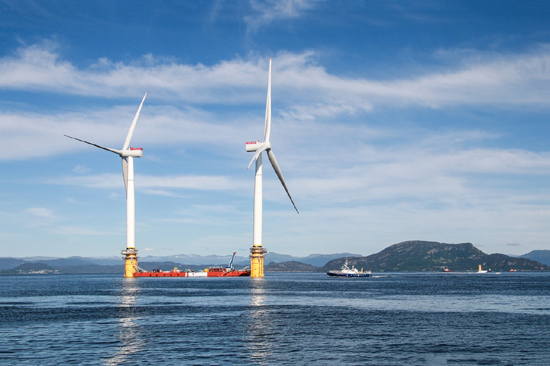The OGA’s UKCS Energy Integration Report estimates that electrification could reduce UKCS oil and gas emissions by 2-3MtCO2 per year by 2030, roughly the equivalent of reducing 20% of today’s production emissions.

WHY CHANGE THE WAY OIL AND GAS ASSETS ARE POWERED
Electrification of offshore oil and gas assets meets several needs:
- Increased energy consumption on platforms: technology advances such as intelligent control platforms, data management systems and high-speed pumping and compression, have raised the demand for power on board oil and gas production assets.
- Focus on decarbonisation: governments and operators have included net-zero goals and lower environmental impact in their ESG plans.
- Need for cost reductions: with the price of oil showing more volatility in the past few years, cost savings are a key rationale behind new capital expenditure. Electrification helps to extend the life of oil and gas assets and achieve cost efficiencies.
- Compliance: Powering offshore platforms with renewable energy also helps with compliance and permitting with air quality regulators.
FLOATING CAN GO THE DISTANCE
Most offshore oil and gas assets currently produce their electricity by using diesel- or gas-powered onsite generators. Electrifying platforms from shore is already a significant improvement to achieve the above-mentioned objectives. However, running a cable from shore is not always feasible or cost-effective, especially if the platform is far from shore and in deeper waters. Using floating renewable energy as a direct source of power – rather than connecting the asset to shore – would save significant capital expenditures in the electrification process, as well as fuel operational expenses.
The 11 turbines of Hywind Tampen for example are meant to do just that and provide around 35%, and potentially more, of the power needed for the five platforms at the Gullfaks and Snorre fields, offshore Norway.
Acteon's engineering teams can deliver global simulations and hydrodynamic analysis that are currently being used to evaluate the feasibility of future floating wind developments.
INTEGRATING FLOATING OIL AND GAS AND RENEWABLES
Acteon is currently working with floating hull designers and talking to operators in the North Sea to provide integrated services for the quick installation of floating renewables solutions to oil and gas asset electrification.
Whether it’s floating wind turbines or floating wave energy converters, they can provide intermittent power to floating production systems.
Installing close to floating oil and gas assets can be challenging because of rules and safety regulations. Acteon has installed both FPSO, semi-subs and wave energy convertors, including the first in a 500-m exclusion zone on the UK Continental Shelf. We also have considerable experience in mooring drilling rigs close to other infrastructure, enabling us to efficiently and safely custom design mooring and cable systems and carefully plan installations. Our engineering teams can deliver global simulations and hydrodynamic analysis that are currently being used to evaluate the feasibility of future floating wind developments. Early engagement with a group with such a wide breadth of services as Acteon allows the efficient integration of asset integrity monitoring devices in the design of the asset and ultimately a longer asset life.
KeyFacts Energy Industry Directory: Acteon
 KEYFACT Energy
KEYFACT Energy